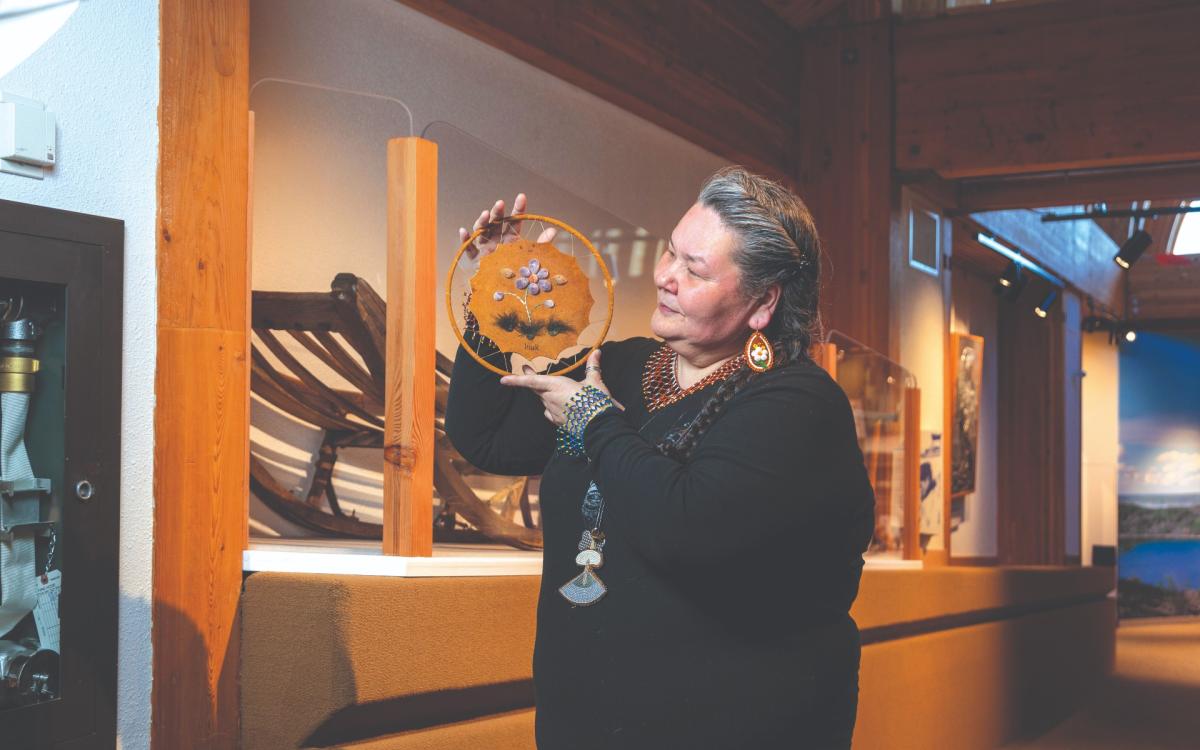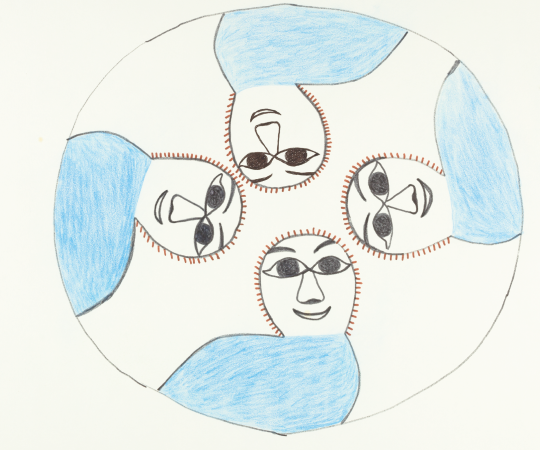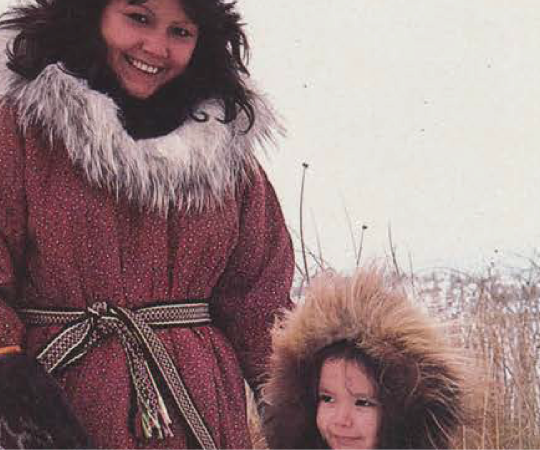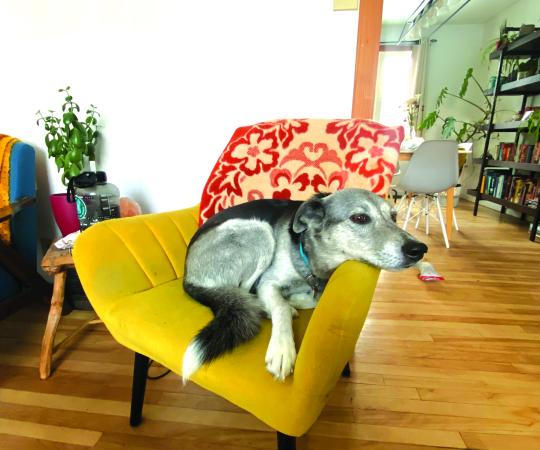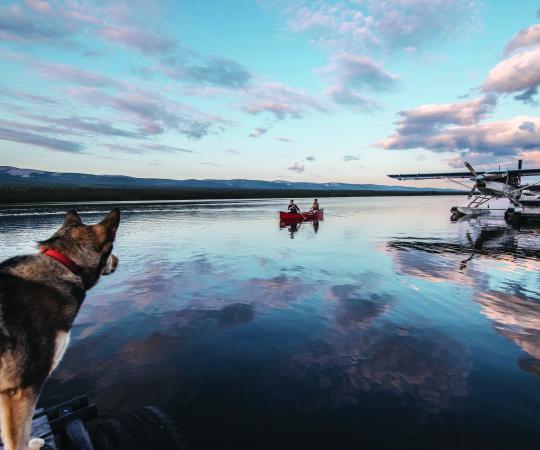The midday sun is bright through the large windows of the Yellowknife museum’s second floor. It’s lunch time on a Thursday afternoon, and local Inuvialut artist Inuk pulls a scrap of tanned hide, artificial sinew, and embroidery scissors from her purse. She’s getting ready to show me how to tuft caribou hair.
Really, I couldn’t ask for a better person to give me a private demonstration. Inuk is an established, expert tufter living in Yellowknife—she uses dyed animal hair, stitched with sinew onto hide in tufts and meticulously manicured with scissors, to create ornate flowers, plants or vivid depictions of the natural world. Her work has been displayed in galleries and exhibitions around the globe. She presented a caribou hair tufting design of an inuksuk to Queen Elizabeth II when the sovereign last visited the territory in 1994. Quick to recognize her talent and dedication, elders in the Dehcho region where she grew up gave Inuk the title of “master tufter” when she was just 25.
“I was born to tuft,” Inuk tells me as we sit down. She shows me the first small flower she made almost 30 years ago, with soft tufted pink petals. Eventually, she would work her way up to larger pieces, like the two-and-a-half-foot by three-foot wall hanging of a killer whale she has in her bedroom. The more detailed the piece, she explains, the more densely-packed the tufts.
Watching Inuk now, her mastery is evident. She assumes her “tufting pose,” bending forward with her elbows on her knees, and starts pulling the sinew apart into thin strands so it can be threaded through the eye of a needle. Her movements are swift and fluid, her hands steady and sure.
It happens in the blink of an eye. Inuk uses the sinew to make a loop through the hide before reaching over to a ball of caribou hair, which has been taken from the animal’s beard and hung up to dry in her house. (Inuk prefers caribou over moose hair as caribou is finer.) She snips off a small bundle, licks her fingers, and starts to run them along the ends of the hairs, removing the small down fluff that emerges. She places the hair under the loop. In a matter of seconds, she expertly knots the sinew so the hair is tight against the hide and sticks straight up in a plume.
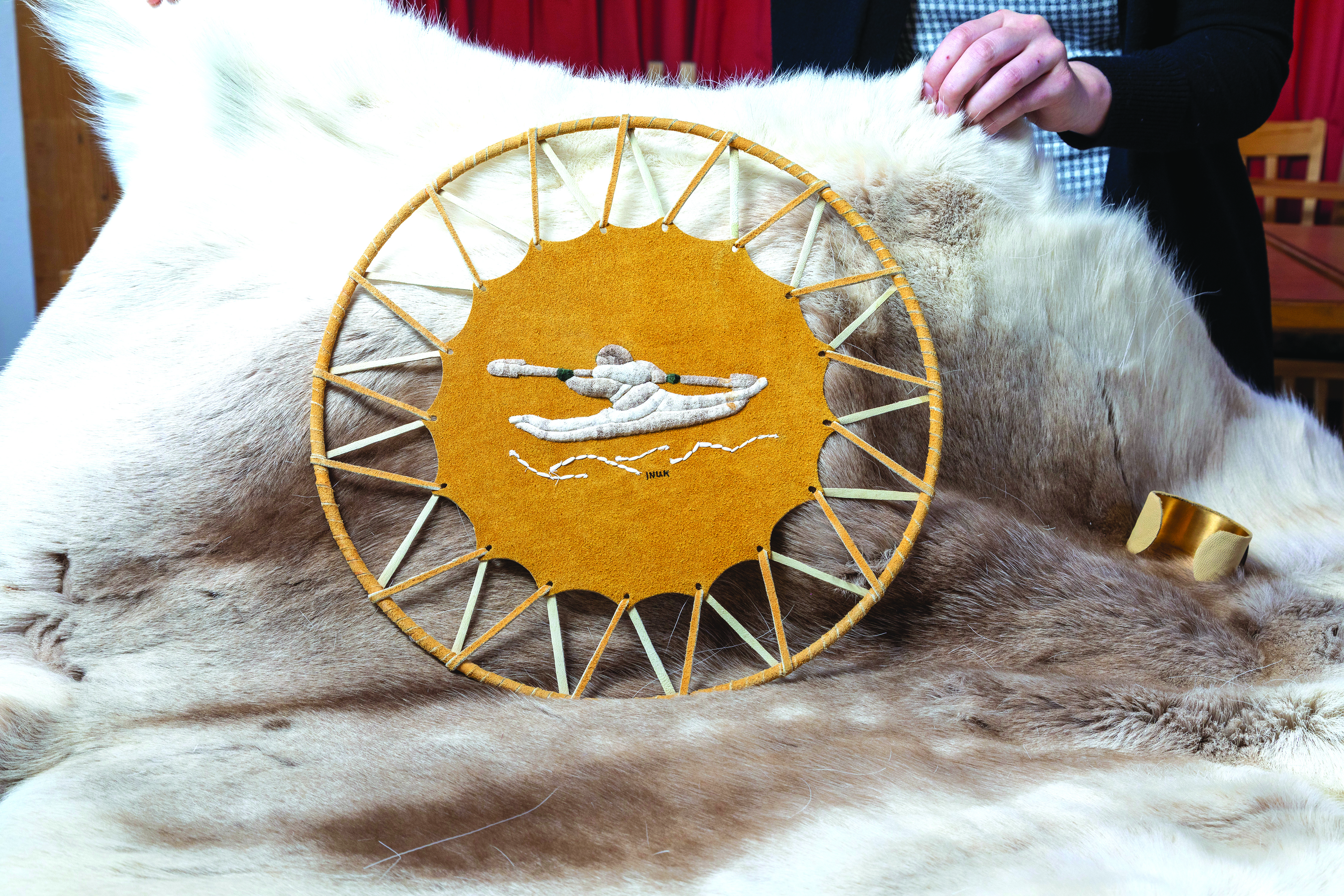
This, Inuk points out, is a tuft. Then she takes her small scissors and starts to trim the ends, taking time to create the shape she wants.
“It should be like velvet when you’re done,” she explains. “Nice and smooth.” Inuk smiles as she works. She’s clearly in her element. “I always wanted to be the Louis Vuitton of tufters. This is my first love.”
There are few artforms more distinctly Northern than tufting. According to NWT Arts, its origins can be traced back to the Dehcho, where a Métis woman named Marie Madeline Lafferty first used moose and caribou hair in the 1920s and 1930s to imitate the yarn punchwork of nuns teaching at the residential school. The technique spread quickly through the territory, taking hold in nearly every community. Although today there are practitioners across the country, it always calls back to its Northern roots.
“You know that it’s from the North when you see it,” says Tania Larsson.
The Gwich’in/Swedish artist designs jewelry using natural materials at her Yellowknife studio, and often incorporates tufting into her pieces to give them depth and dimension. She first explored this idea when preparing a pair of silver earrings for her senior show at Santa Fe’s Institute of American Indian Arts back in 2017. “I made a floral motif out of caribou tufting and sewed it to the earrings, and I just really loved how they turned out because it felt like home.
“And there’s this innate need to touch it,” Larsson adds. “Whenever I’ve had pieces on display, you can just see people itching to put their finger on it. I think it’s so funny.”
However delicate the final product may appear, preparation can be tedious. Hair must be properly cleaned and dried to prevent mold from growing. Tufters sometimes take to blow-drying it to speed up the process. Scissors must be sharp and well-kept so they can properly snip and sculpt. When it comes to colouring the hair, achieving a consistent shade with fabric dyes is difficult.
Vashti Etzel, a designer in southern Yukon, feels this challenge adds to the artform’s inventiveness. The Shuhta and Kaska Dene artist—who tufts wearable art and statement pieces—dyes the caribou hair she works with multiple colours, then tufts it together to create rainbow designs.

Etzel, owner of Golden Eye Designs, has recently turned to tufting as a way to help her connect with her Kaska language and traditional knowledge. She shares the story behind her new line of red tufted strawberry earrings as an example.
“My backyard is full of wild strawberries in the summer,” she says. “[In the Kaska language], we call them gēsdzídze, which translates to ‘salmon berry’ because they grow when the salmon start running in my area. I was picking some with my son, and realized I haven’t seen any tufted strawberry earrings or anything, so I thought maybe I should give it a go. There’s all these little meanings behind each piece that I make.”
Across the North, tufting is growing in popularity. Both Larsson and Etzel have noticed more and more artists incorporating tufting into their work—not just in Canada, but the United States as well. It’s exciting to see, they say.
“It’s feeling connected to a practice that is Indigenous, and it’s always powerful to work with natural materials from animals,” Larsson says. “It makes my heart burst whenever I see it, and I think a lot of people react like that because it’s so beautiful. To me, it is so special to be able to add it to adornments as a way to show who I am and where I’m from.”
Back in the museum, Inuk hands me the hide and needle to try tufting out for myself. I’m clumsy in my attempts to repeat what I just saw her do so effortlessly, struggling to even cut a bundle of hair and properly position it under the sinew. Inuk kindly guides me as I poke and prod until finally, a small tuft emerges. Compared to hers, it looks lumpy and awkward. You must be very patient to do something like this, I tell her. She simply waves the comment off.
“People always say I must have so much patience, but when you’re born to do something, it’s like second nature. Besides, they haven’t seen me at the grocery store with a kid screaming.”
Inuk is exceedingly generous with her gift. When a hand injury four years ago left her unable to tuft as often as she once did, she pivoted her creative energies to uplifting others. She began collaborating with her mother—another master tufter—and older brother on a business venture. Inuk360 creates accessories and clothing with natural materials like seal fur and markets them online.
In her downtime, Inuk usually teaches a student or two the finer points of the artform. She’s mentored hundreds over the years, and is always ready to offer a helping hand and gentle encouragement.
“The future is very exciting because there’s more tufters coming out who want to learn it and love it and share it like I do, and that makes me super happy,” she says. “What an accomplishment that you get to go to bed and wake up doing something you friggin’ love.”

